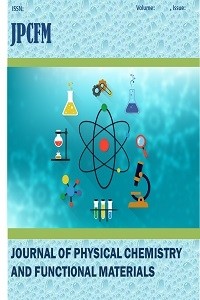Response Surface Methodology Optimized Eriochrome Black T Dye Removal Using Alumina Beads: Isotherms and Kinetics Studies
Response Surface Methodology Optimized Eriochrome Black T Dye Removal Using Alumina Beads: Isotherms and Kinetics Studies
Alumina beads mechanism, RSM, Eriochrome Black T.,
___
- [1] K. G. Akpomie and F. A. Dawodu, “Acid-modified montmorillonite for sorption of,” Beni-Suef Univ. J. Basic Appl. Sci., vol. 5, no. 1, pp. 1–12, 2016, doi: 10.1016/j.bjbas.2016.01.003.
- [2] R. Castañeda, S. León, E. Robles-belmont, and E. Záyago, “Review of nanotechnology value chain for water treatment applications in Mexico,” Resour. Technol., vol. 3, no. 1, pp. 1–11, 2017, doi: 10.1016/j.reffit.2017.01.008.
- [3] R. Elmoubarki, F. Z. Mahjoubi, H. Tounsadi, and J. Moustadraf, “Adsorption of textile dyes on raw and decanted Moroccan clays : Kinetics , equilibrium and thermodynamics,” Water Resour. Ind., vol. 9, pp. 16–29, 2015, doi: 10.1016/j.wri.2014.11.001.
- [4] K. Amel, M. A. Hassena, and D. Kerroum, “Isotherm and Kinetics Study of Biosorption of Cationic Dye onto Banana Peel,” vol. 19, pp. 286–295, 2012, doi: 10.1016/j.egypro.2012.05.208.
- [5] Y. Miyah, A. Lahrichi, and M. Idrissi, “Assessment of adsorption kinetics for removal potential of Crystal Violet dye from aqueous solutions using Moroccan pyrophyllite,” pp. 20–28, 2017, doi: 10.1016/j.jaubas.2016.06.001.
- [6] A. M. Mahmoud, F. A. Ibrahim, S. A. Shaban, and N. A. Youssef, “Adsorption of heavy metal ion from aqueous solution by nickel oxide nano catalyst prepared by different methods,” Egypt. J. Pet., vol. 24, no. 1, pp. 27–35, 2015, doi: 10.1016/j.ejpe.2015.02.003.
- [7] G. M. Al-senani and F. F. Al-fawzan, “Adsorption study of heavy metal ions from aqueous solution by nanoparticle of wild herbs,” Egypt. J. Aquat. Res., vol. 44, no. 3, pp. 187–194, 2018, doi: 10.1016/j.ejar.2018.07.006.
- [8] E. E. Elsayed, “Natural diatomite as an effective adsorbent for heavy metals in water and wastewater treatment ( a batch study ),” TITLE=Water Sci., vol. 32, no. 1, pp. 32–43, 2018, doi: 10.1016/j.wsj.2018.02.001.
- [9] H. S. Mohamed, N. K. Soliman, D. A. Abdelrheem, A. A. Ramadan, A. H. Elghandour, and S. A. Ahmed, “Adsorption of Cd 2 D and Cr 3 D ions from aqueous solutions by using residue of Padina gymnospora waste as promising low-cost adsorbent,” Heliyon, no. November 2018, p. e01287, 2019, doi: 10.1016/j.heliyon.2019.e01287.
- [10] A. S. Badday, A. Z. Abdullah, and K. Lee, “Optimization of biodiesel production process from Jatropha oil using supported heteropolyacid catalyst and assisted by ultrasonic energy,” Renew. Energy, vol. 50, pp. 427–432, 2013, doi: 10.1016/j.renene.2012.07.013.
- [11] W. M. Gitari, A. A. Izuagie, and J. R. Gumbo, “Synthesis , characterization and batch assessment of groundwater fluoride removal capacity of trimetal Mg / Ce / Mn oxide-modified diatomaceous earth,” Arab. J. Chem., vol. 13, no. 1, pp. 1–16, 2020, doi: 10.1016/j.arabjc.2017.01.002.
- [12] G. Lee, C. Chen, S. Yang, and W. Ahn, “Enhanced adsorptive removal of fluoride using mesoporous alumina,” Microporous Mesoporous Mater., vol. 127, no. 1–2, pp. 152–156, 2010, doi: 10.1016/j.micromeso.2009.07.007.
- [13] V. Temkin, M.J. and Pyzhev, “Recent modifications to Langmuir isotherms.,” Acta Physiochim. USSR, vol. 12, p. 217, 1940.
- [14] B. Zhao, W. Xiao, Y. Shang, H. Zhu, and R. Han, “Adsorption of light green anionic dye using cationic surfactant-modified peanut husk in batch mode,” Arab. J. Chem., vol. 10, pp. S3595–S3602, 2017, doi: 10.1016/j.arabjc.2014.03.010.
- [15] H. Panda, N. Tiadi, M. Mohanty, and C. R. Mohanty, “Studies on adsorption behavior of an industrial waste for removal of chromium from aqueous solution,” South African J. Chem. Eng., vol. 23, pp. 132–138, 2017, doi: 10.1016/j.sajce.2017.05.002.
- [16] M. Karnib, A. Kabbani, H. Holail, and Z. Olama, “Heavy Metals Removal Using Activated Carbon , Silica and Silica Activated Carbon Composite,” Energy Procedia, vol. 50, pp. 113–120, 2014, doi: 10.1016/j.egypro.2014.06.014.
- [17] Z. Kariuki, J. Kiptoo, and D. Onyancha, “Biosorption studies of lead and copper using rogers mushroom biomass ‘ Lepiota hystrix ,’” South African J. Chem. Eng., vol. 23, pp. 62–70, 2017, doi: 10.1016/j.sajce.2017.02.001.
- [18] S. Banerjee and M. C. Chattopadhyaya, “Adsorption characteristics for the removal of a toxic dye , tartrazine from aqueous solutions by a low cost agricultural by-product,” Arab. J. Chem., vol. 10, pp. S1629–S1638, 2017, doi: 10.1016/j.arabjc.2013.06.005.
- [19] M. El Haddad, “Removal of Basic Fuchsin dye from water using mussel shell biomass waste as an adsorbent : Equilibrium , kinetics , and thermodynamics,” Integr. Med. Res., vol. 10, no. 5, pp. 664–674, 2016, doi: 10.1016/j.jtusci.2015.08.007.
- [20] J. C. Weber Jr., W.J., Morris, “Kinetics of adsorption on carbon from solution.,” J. Sanit. Eng. Div. Proc. Am. Soc. Civ. Eng., vol. 89, p. 31, 1963.
- [21] A. A. Inyinbor, F. A. Adekola, and G. A. Olatunji, “Kinetics , isotherms and thermodynamic modeling of liquid phase adsorption of Rhodamine B dye onto Raphia hookerie fruit epicarp,” Water Resour. Ind., vol. 15, pp. 14–27, 2016, doi: 10.1016/j.wri.2016.06.001.
- [22] I. Nadir, Y. Achour, A. El Kassimi, M. El Himri, M. R. Laamari, and M. El Haddad, “Removal of Antibiotic Sulfamethazine from Aqueous Media Using Watermelon Seeds as a New Low Cost and Ecofriendly Adsorbent,” Phys. Chem. Res., vol. 9, no. 2, pp. 165–180, 2021, doi: 10.22036/pcr.2020.249992.1839.
- [23] S. L. Lee, C.K., Low, K.S., Chew, “Removal of anion dyes by water hyacinth roots.,” Adv. Environ. Res., vol. 3, pp. 343–351, 1999.
- ISSN: 2651-3080
- Yayın Aralığı: Yılda 2 Sayı
- Başlangıç: 2018
- Yayıncı: Niyazi BULUT
Theoretical Analysis of the Reactivity of Carmustine and Lomustine Drugs
Rebaz OMER, Lana AHMED, Ibrahim QADER, Pelin KOPARIR
Arzu ETKESER AKTAŞ, Rebaz OMER, Metin KOPARIR
A Review on DPA for computing radiation damage simulation
Hiwa Mohammad QADR, Dyari MAMAND
Influence of crushed sand on the dynamic modulus of elasticity of sand concrete
A Review on the Effect of Mechanical and Thermal Treatment Techniques on Shape Memory Alloys
Safar Saeed MOHAMMED, Mediha KÖK, Ibrahim QADER, Razaw QADIR
The Determination of Eigenvalues and Eigenvectors of the Orbital Angular Momentum
Kishwar Mohammed WASMAN, Saman MAWLUD
Theoretical inhibitor Calculation for Synthesis of Two New thiazole Derivatives
A review on Physical Properties of CdS Thin Film
